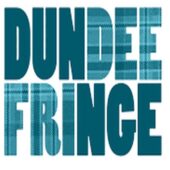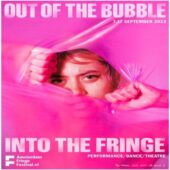Fringe Online 2020
A Separate Peace
Producer Curtain Call, Co-producer Platform Presents, Co-producer Apples & Oranges Arts, Partner Shubert Organization, Sponsors SHURE, Zoom Charity The Felix Project

Genre: Absurd Theatre, Adaptation, Comedy, Contemporary, Experimental, Online Theatre, Short Plays, Theatre
Venue: Several Rooms in the UK
Festival: Fringe Online, FringeReview UK
Low Down
Directed by Sam Yates Video Designer Andrzej Goulding, Sound Designer Sam Glossop , Costume Designer Amelia Sierevogel, Lighting Designer Nat Green, Tech Designer Tim Kashani, Stage Manager Georgia Bird, Production Manager Kate West, Deputy Stage Manager Kim Battistini, PR Kevin Wilson PR
Producer Curtain Call, Co-producer Platform Presents, Co-producer Apples & Oranges Arts, Partner Shubert Organization, Sponsors SHURE, Zoom Charity The Felix Project
Review
Ed Stoppard was scheduled to be appearing in Tom Stoppard’s Leopoldsdtadt in the West End till June 13th. None could have predicted he’d feature as Matron in a far earlier Stoppard work on May 2nd. It’s…. Stoppardian.
It’s also a tribute to the innovation and resilience of theatre that a complete team assemble virtually in Lockdown to produce a 35-minute play live-zoomed in from five actors and even more creatives.
It’s easy to see Tom Stoppard’s award-wining radio drama Albert’s Bridge from 1967, in this early work, A Separate Peace (1964),
Albert’s Bridge follows a philosophy student who opts to spend a life painting a suspension bridge from one end to the other and back; so as you reach the end, the beginning needs painting. Whilst this feeds Stoppardian obsessions, not to mention Rosencrantz and Guildenstern calling ‘heads’ it’s a work proclaiming its prototype in this earlier work for television – before Stoppard had written anything more than theatre reviews in Bristol. Only the young can afford to be alone Larkin reminds us. Stoppard’s early characters whatever their age often wanted to be.
A Separate Peace is slighter and certainly gentler than Albert’s Bridge. A private nursing home’s running and even staff’s peace is disrupted at 2am by the arrival of John Brown. The only spoiler is it turns out apparently to be his name. And he’s been here before, as we find out.
David Morrissey – last seen as Mark Antony in the Bridge’s Julius Caesar – exudes an almost valedictory warmth as Brown. He can easily pay for his room with a suitcase of cash… but is perfectly healthy.
He first rustles up the on-duty Nurse Maggie Service (Call The Midwife) who sadly has least to do in this 34-minute work than feel perplexed and overborne by charm. Calling the doctor – Denise Gough no less (Oliviers for People, Places and Things and Angels in America), doesn’t help as the over-tired medic doesn’t like being roused. With half-awake bafflement to overcome, a healthy man takes his bed in a care home for the old. Gough bites into her phone; you can see her desperate to pluck out the heart of Brown’s mystery.
Five actors, never all at once, follow four, sometimes three Zoom squares as they appear and vanish cleanly.
And Brown’s so charming. All he wants is to get away from the world. Giving nothing away, except very gradually, he’s befriended by warm-hearted Nurse Maggie Coates – Jenna Coleman (last seen in Doctor Who), who in spite of herself rather falls for Morrissey’s gentle, beautifully-modulated Brown.
Coleman’s alert to everything Coates’ role suggests and reluctantly obeys her duty to report back. When she asks Brown his age and he says disarmingly ‘twice yours’ she replies ‘twenty two’ warmly and invitingly. Trying to pin Brown down she nevertheless spontaneously gives of herself.
It’s an interestingly conflicted role, played by Coleman with a melt of hard-bitten practical sense. When she tells Brown he’s attractive, brings Brown flowers after he’s decorated a whole room – a pastoral mural gradually apparatus – behind Morrissey, you feel a small gush of romance: it’s rare in Stoppard. The only jar here is textual editing ‘for free’ an update for ‘free’ though clearly this isn’t set in 1964.
Gough’ Doctor and Ed Stoppard’s Matron, here follow a separate thread discussing how even the psychiatrist is charmed. Their desperately comic, attempts to crack the riddle of Brown’s disarmingly being what he says he is.
Morrissey further humanizes and warms Brown; Stoppard indeed gives the character gentleness and reflective eddies as he recalls his happiness: four years a POW. Coleman’s the kind of nurse one dreams of in these distracted times, a rather thin carapace giving on to great privately expressed warmth. Stoppard’s avuncular Matron, Service’s baffled but sympathetic Nurse and Gough’s stressed Doctor teasing out existentialism from a register: they all suggest a health service whose plight with our own lies well beyond this play’s confines; and inform it very differently now.
Directed by Sam Yates Video Designer Andrzej Goulding who manages a mica-white vanishing of all backgrounds save a creeping pastoral behind Morrissey, Sound Designer Sam Glossop with a twinge of unease, Costume Designer Amelia Sierevogel garbs everyone brightly in black with a twist of a hat for Morrissey, Lighting Designer’s Nat Green, and Tech Designer Tim Kashani.
Stoppard here first poses his existential question about how our society slides along lines of Max Weber’s Protestant Work Ethic: why do we feel so uncomfortable about people who want to do nothing – even when they can afford it? By removing capital from the equation, Stoppard here in its purest form and in Albert’s Bridge, looks at society’s phantom limb ethic. Even when it’s gone it aches, and it aches to have someone opting out.
A Separate Peace will raise money for stage technicians and creatives forced out of work by COVID-19, as well as The Felix Project food charity.

































